The Coast & River Report endorses & supports the fine work of the Los Padres Forestwatch organization. Click here to review their many activist campaigns to protect our water, our watershed & our local environment.
Agencies Cancel Plans to Frack Wells, Build Pipelines in Los Padres National Forest
by ForestWatch on APRIL 15, 2024 in CLIMATE CHANGE, FRACKING, OIL DEVELOPMENT, VENTURA COUNTY
VENTURA COUNTY, Calif.— Two federal agencies have confirmed the cancellation of applications for permits to drill and frack eight new wells on federal public land in Los Padres National Forest. The announcement, made April 3, comes just weeks after California officials proposed a statewide ban on this extremely dangerous fossil fuel extraction technique.
Together, the two actions signal the end of the toxic era of fracking in the Sespe Oil Field. Fracking has occurred here for decades unbeknownst to the public, but when ForestWatch uncovered the polluting practice through a series of Freedom of Information Act requests in 2012, a pause in fracking occurred amidst public opposition, regulatory changes requiring increased transparency, and an outpouring of scientific studies showing the dangers posed to human health and the environment.
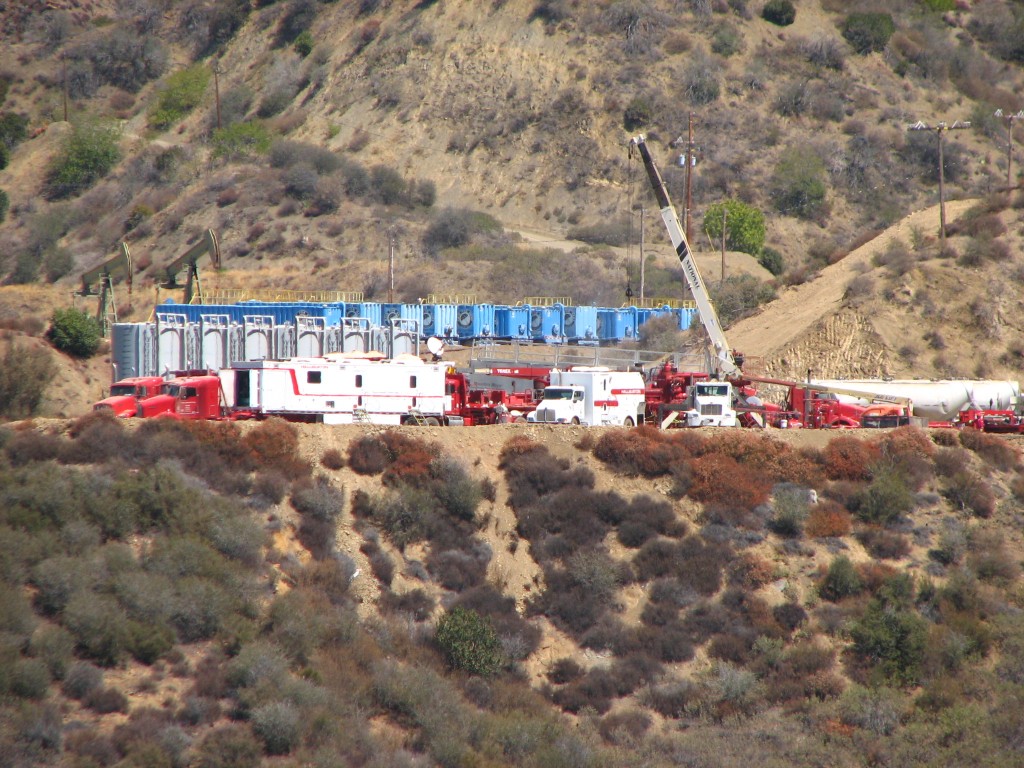
The eight applications—submitted a decade ago, but never approved—refocused the spotlight on the Sespe and the public health and environmental risks posed by fracking.
“This announcement closes the chapter on a toxic and dangerous legacy of fracking in the Sespe,” said Jeff Kuyper, executive director of Los Padres ForestWatch, one of the organizations that mobilized residents to oppose the fracking plan. “While fossil fuel extraction here continues to pose grave dangers to our public lands, communities and climate, today we celebrate this important step forward as we continue the transition to clean energy.”
“I’m relieved that these long-pending drilling and fracking applications have been cancelled, averting a major threat to condors and steelhead,” said Lisa Belenky, senior counsel at the Center for Biological Diversity. “Condors have suffered from oil wells and pipelines in this area in the past and steelhead critical habitat in Sespe Creek is downstream from the oil field, so this is a win for biodiversity. We can’t allow expansion of fracking and other oil and gas extraction on our public lands. Ending fossil fuel production is critical to reducing greenhouse gas pollution and supporting real climate solutions.”
Seneca Resources — a Texas-based oil company — filed the original drilling applications with the Bureau of Land Management in 2013, seeking permission to frack eight new wells in the Sespe Creek watershed along with the construction of nearly two miles of new pipelines, a 12,600-gallon tank, and other industrial facilities in this remote area upstream of the town of Fillmore. Carbon California, a Colorado-based company, eventually took over operation of the Sespe Oil Field.
From the beginning, the plan faced widespread opposition, but the U.S. Forest Service anticipated that the wells would be approved within months and joined with the BLM to prepare an Environmental Assessment. An EA is a concise, less-detailed analysis often reserved for projects without significant environmental impacts. Thousands of local residents submitted letters and signed petitions urging the agencies to prepare a more detailed Environmental Impact Statement or to reject the wells outright.
Hydraulic fracturing — commonly known as “fracking” — is a process whereby water, sand and thousands of gallons of chemical additives are injected underground to break apart rock formations and stimulate the extraction of oil and gas. The technique has come under increasing scrutiny from scientists, regulators and the public due to concerns about groundwater contamination, surface water pollution, water consumption and public health. Hundreds of fracking chemicals are known to be toxic to humans and wildlife, and several are known to cause cancer.
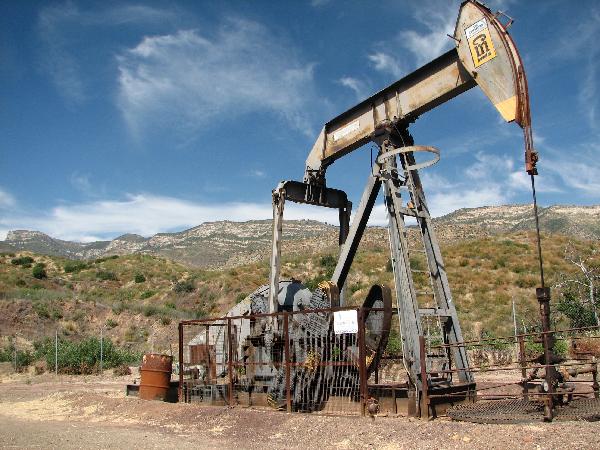
Located approximately four miles north of Fillmore in Ventura County, the Sespe Oil Field is one of the oldest oil fields in California. The lands in and around the oil field provide important habitat for endangered California condors. That includes the Sespe Condor Sanctuary, the Hopper Mountain National Wildlife Refuge, and the Sespe Wilderness. The headwaters of several mountain streams originate in the Sespe Oil Field before emptying into Sespe Creek, which is formally designated critical habitat for endangered southern steelhead and is classified as an “Area of High Ecological Significance” by the U.S. Forest Service.
“The protection of this sensitive environment from the dangers of fracking is a step in the right direction. The residents of Fillmore rely on the Sespe Creek watershed to recharge their groundwater supply, and it is now receiving the protection it deserves,” said Haley Ehlers, executive director at Climate First: Replacing Oil & Gas (CFROG). “Agencies must continue the progress by protecting our public lands and communities from all types of extreme oil extraction.”
Statewide Fracking Ban Nears
California has not approved a fracking permit since 2021. That same year, Gov. Newsom announced a plan to stop issuing fracking permits within three years and phase out fossil fuel extraction by 2045. In tune with the governor’s plan, California oil regulators earlier this year unveiled their official proposal to permanently ban fracking throughout the state.
The proposed regulatory text reads: “The [California Geologic Energy Management] Division, including the supervisor and district deputies, will not approve applications for permits to conduct well stimulation treatments.” The regulatory change is expected to be finalized in the coming months. “Most of the fracking in the Sespe Oil Field occurred decades ago when the American public was still unaware that such a practice even existed,” said Alasdair Coyne, conservation director of Keep Sespe Wild. “It’s good to see that our state regulators are now acting to protect our water supplies from the toxic pollution that is an ever-present risk with fracking operations.”
ForestWatch Leads Federal and State Legislators Staff on Fire Ecology Hike in Los Padres
by Carla Mena on APRIL 17, 2024 in ENVIRONMENTAL EDUCATION, FIRE, PUBLIC LANDS
On March 14th, ForestWatch took our southern elected official offices on a hike to discuss fire ecology. The hike through Sisar Canyon provided a unique opportunity for staffers from Representative Carbajal’s, Senator Limon’s, and Assemblymember Bennett’s office to learn more about the complexity of fire ecology in the Los Padres National Forest. The area’s native shrubland ecosystems, including chaparral and coastal sage scrub, have coevolved with fire over millions of years. These plants have developed unique adaptations to survive and thrive within the natural fire regime that has shaped the landscape.

Sisar Canyon was selected for its proximity to the start of the Thomas Fire, offering a tangible example of the historical fire patterns in the region. Historically, wildfires occurred every 30 to 150 years, driven by natural ignition sources such as lightning. However, with EuroAmerican settlement, the frequency of fires has increased due to human-caused ignitions, invasive species encroachment, and climate change.
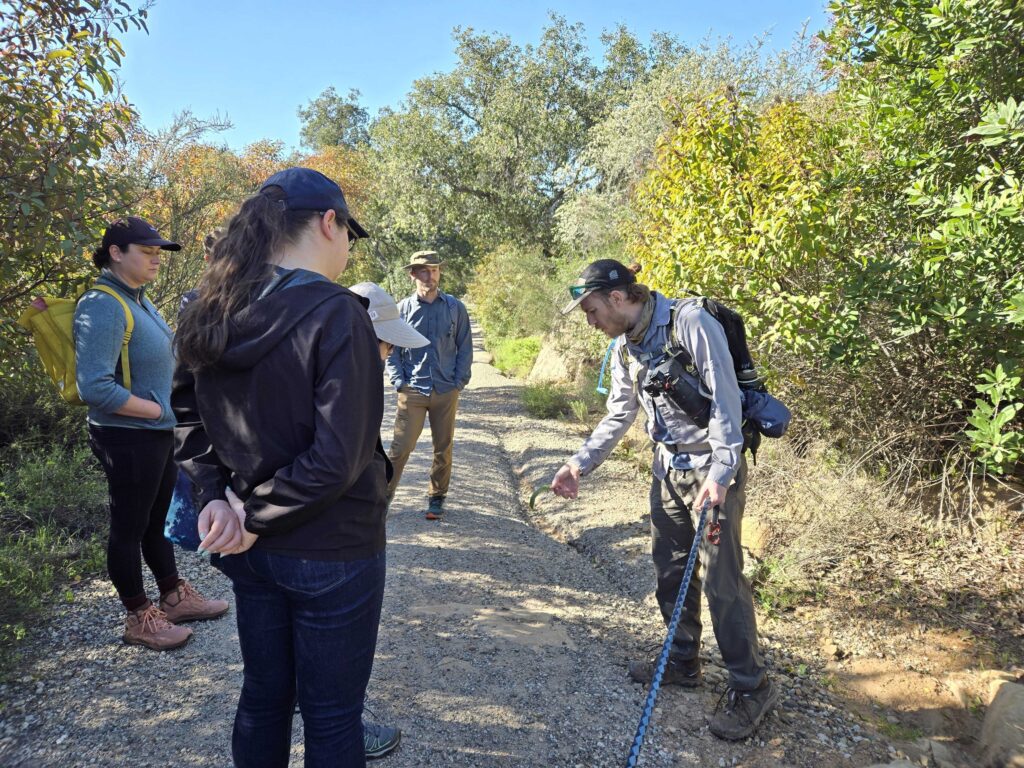
educating staffers on ecology found near the trail.
The loss of native shrubs due to these factors can lead to the dominance of highly flammable invasive grasses and weeds, resulting in type conversion within the ecosystem. These invasive species dry out earlier in the year, are more easily ignited, and spread wildfires more rapidly, particularly under non-extreme wind conditions. Once established, they are extremely difficult to eradicate, further altering the already fragile ecological balance of the landscape.
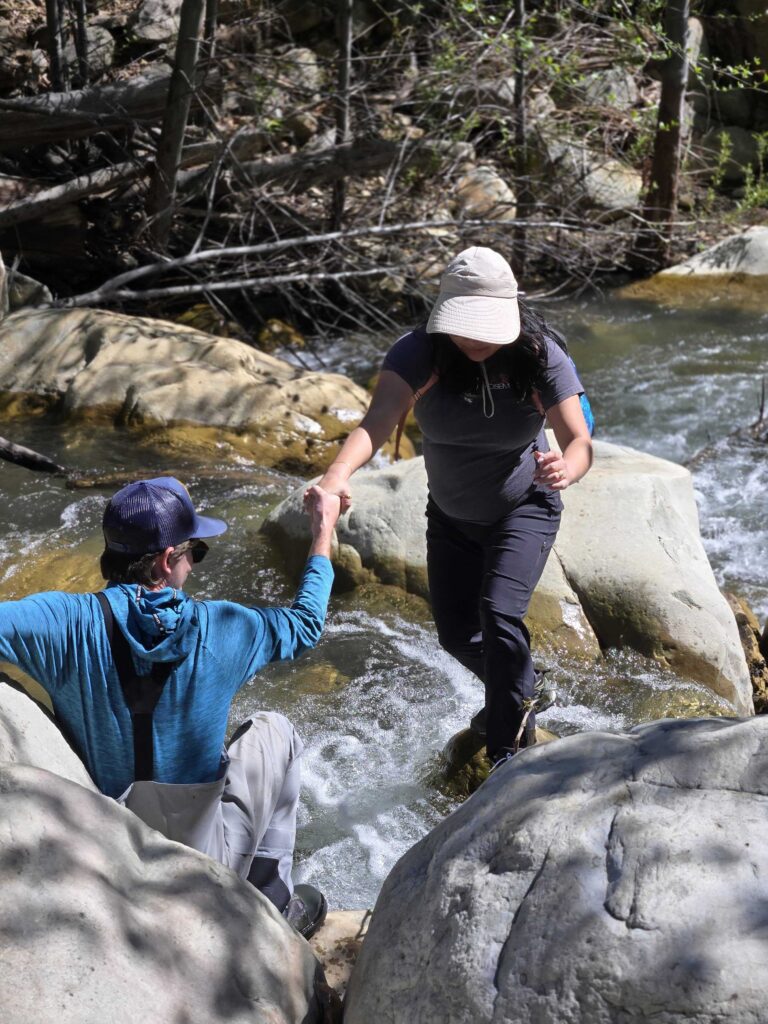
By engaging elected officials in firsthand experiences like hikes through sensitive ecosystems, ForestWatch aims to inform and educate policymakers. It is crucial for representatives to understand the ecological significance of these areas, the impact they have on surrounding communities, and the potential consequences of legislative actions. The planned series of hikes includes areas like Pine Mountain where Forest Service projects are underway, will continue to provide valuable insights for policymakers and foster informed decision-making regarding land management and conservation efforts. We are grateful to have engaged elected officials who are jumping at the opportunity to get their feet wet and learn more about the forest.
STORM DAMAGED WATERSHED APP FREE DOWNLOAD
(Jan., 2023) – The Los Padres Forest Watch organization has just announced the release of their free app to let you see at a glance areas where recent storms have rendered the trails unsafe for hiking and/or biking. It is strongly recommended that you download the app and refer to it prior to planning any outing in any of the affected watersheds.
Los Padres Forest Watch Newsletter Fall 2023
Appeals Court Upholds Ventura County Programs to Safeguard Wildlife Connectivity
by ForestWatch on NOVEMBER 14, 2023 in ENVIRONMENTAL LAW, VENTURA COUNTY, WILDLIFE PROTECTION
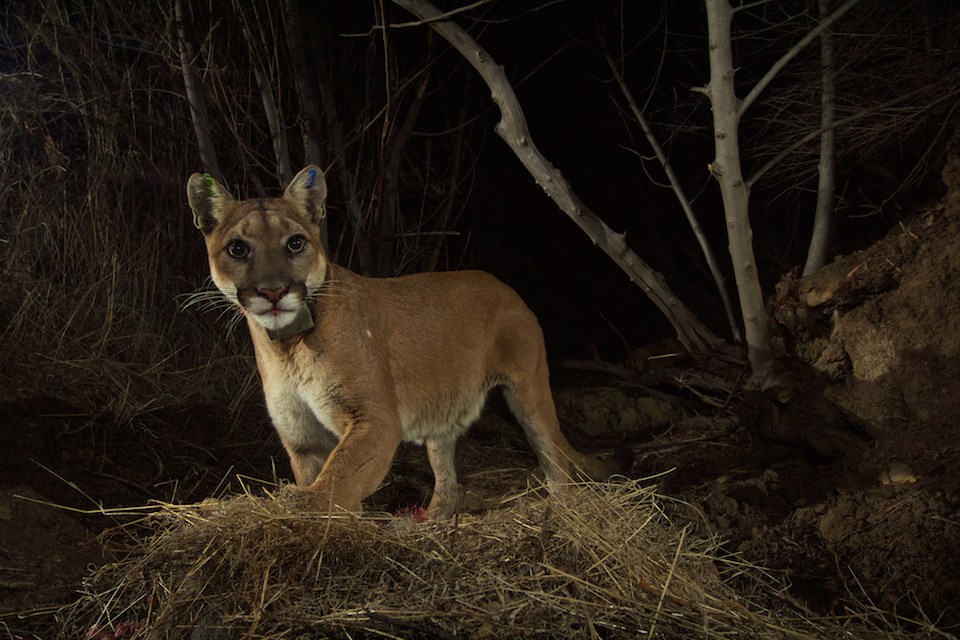
VENTURA COUNTY, Calif.— A new program that increases protections for wildlife corridors throughout southern California’s Ventura County has prevailed after a three-judge panel agreed with the county and conservationists and found that the wildlife protections were lawful.
The unanimous ruling, issued on November 13 by the California Court of Appeals, upholds a set of land use ordinances to protect creeks, rivers, and other pathways used by wildlife to travel between key habitat areas. The program was approved by the County’s board of supervisors in 2019 to provide incentives for landowners to avoid development that may hinder wildlife connectivity. It is the first program of its kind in California.
“This is a tremendous victory for our region’s wildlife, giving them more room to roam across the landscape,” said Jeff Kuyper, executive director of Los Padres ForestWatch. “These science-based measures will help secure a safer future for our region’s wildlife, giving them a fighting chance as they try to navigate amidst highways and urban sprawl.”
The three-judge panel issued the ruling in response to a legal challenge to the ordinances by industry lobbying groups including the Ventura County Coalition of Labor, Agriculture and Business, and the California Construction and Industrial Materials Association. Four conservation groups formally intervened in the case to support the County’s position.
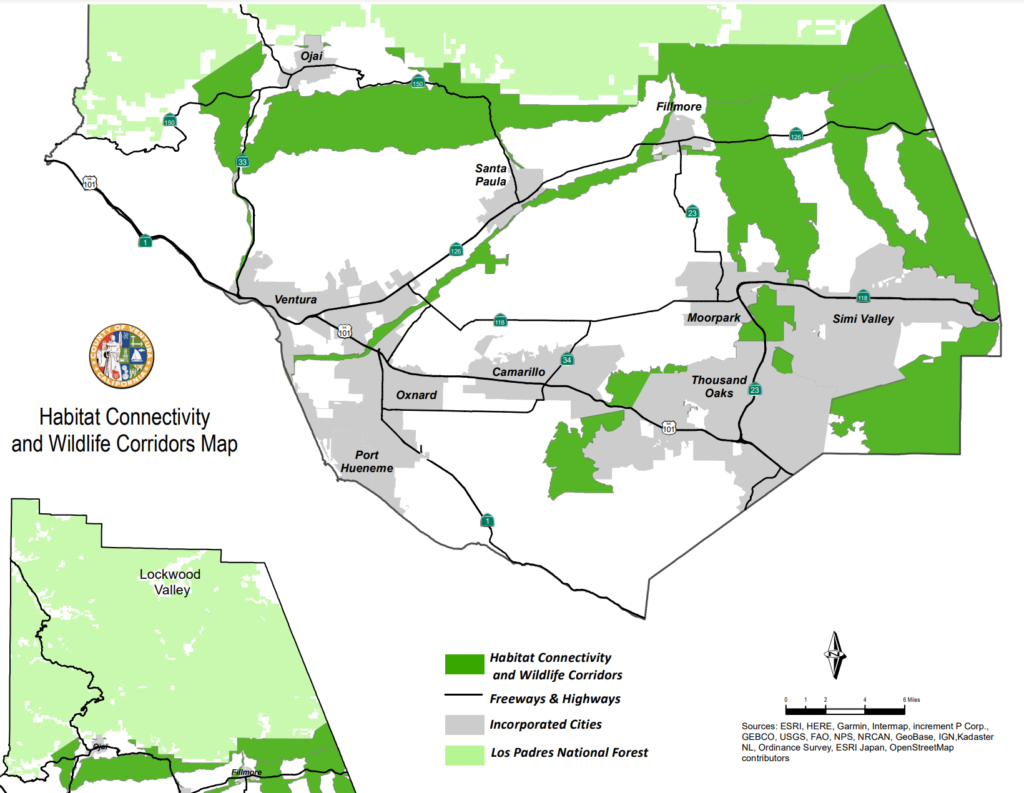
“This is proof that communities can and should develop sensibly and keep wildlife connectivity in mind,” said Aruna Prabhala, a senior attorney at the Center for Biological Diversity. “Decision makers across California should look to Ventura County and consider wildlife corridor protection as a way to co-exist with the beloved wildlife all around us.”
The ordinances help protect the wildlife corridors that connect the Los Padres National Forest, Santa Monica Mountains, and Simi Hills. Habitat connectivity is crucial for the survival of mountain lions, gray foxes, black bears, deer, California red-legged frogs, and other wildlife in the region.
“This decision is a victory for Ventura County and the diverse wildlife that need to navigate the complex and developed landscape,” said Pamela Flick, California program director for Defenders of Wildlife. “We commend the county for its bold leadership to ensure that wildlife can better move through their environment and hope these ordinances will serve as a model for counties throughout California.”
In Southern California, mountain lions have struggled with diminishing and fragmented habitat. The California Fish and Game Commission is considering permanent protection of Southern California and Central Coast mountain lions under the state’s Endangered Species Act. A vote is expected in the coming months.

“This decision is a critical win for conservation, and the hope that numerous threatened and endangered species will continue to grace our landscapes for generations to come,” said Dennis Arguelles, Los Angeles program manager for National Parks Conservation Association. “From the Los Padres National Forest to the Santa Monica Mountains, local wildlife has a fighting chance thanks to the innovation and leadership of Ventura County.”
Earlier this year, the Ventura County board of supervisors voted unanimously to adopt a second set of measures providing safe passage for wildlife and vehicles at 14 existing wildlife crossing structures (e.g. bridges and road culverts) in the northern part of the county, including near Ojai and within the boundary of the Los Padres National Forest. The ordinance limits certain types of development and land uses within 200 feet of the crossings.
Together, the two programs mark the culmination of a multi-year effort by the Ventura County Planning Division to establish a county-wide balance between private property interests and the need to protect Ventura County wildlife from vehicle-related mortality. The action is also a major victory for conservation groups that continue to defend these wildlife protections in court.
Los Padres ForestWatch, the Center for Biological Diversity, Defenders of Wildlife and the National Parks Conservation Association intervened to defend the ordinances. The groups were represented by the Environmental Law Clinic at the University of California, Irvine School of Law.
Los Padres Forest Watch Newsletter Spring 2023
| Groups File Opening Arguments in Pine Mountain Logging Lawsuit Environmental groups together with Patagonia, the City of Ojai, and the County of Ventura filed their opening arguments in a federal lawsuit challenging a controversial logging plan for Pine Mountain against the U.S. Forest Service and the U.S. Fish & Wildlife Service. In a 56-page legal filing, the groups argue that the U.S. Forest Service illegally approved the logging plan by using a loophole to evade preparation of an environmental impact statement, failed to use the best available science, failed to use a collaborative process to incorporate stakeholder input, and failed to meet other criteria to qualify for the loophole. As Some Trails and Roads Reopen, Others Remain Closed in Los PadresThe Forest Service has announced that the blanket closure of four Los Padres National Forest ranger districts has been lifted, but several trails and roads remain closed due to storm damage and dangerous conditions. Check out our desktop- and mobile-friendly web app, OpenTrails, to see if your favorite spot is open. Visit the OpenTrails web app. Women’s History Month: Margaret Hunt, the Courageous Horsewoman of OjaiDuring the infamous Matilija Fire in 1932, Margaret Hunt led a series of heroic efforts to lead pack horses carrying supplies to the increasingly remote crews of firefighters in the Ojai backcountry. It nearly claimed her life. Read more about Margaret’s story. We’re Hiring: Director of Development – Join our team and help protect your forest! ForestWatch is seeking a full-time Director of Development. Primary responsibilities include managing our major donor program; engaging our supporters through strategic communications and storytelling; preparing and executing an annual membership renewal and recruitment plan; growing our planned giving and corporate partnership programs, and securing and tracking foundation grants. Read Job Description Community Spotlight: The Trail Ahead Podcast – Launched in March 2021, The Trail Ahead is a podcast and media series hosted by friends, athletes and environmental justice advocates Faith E. Briggs and Addie Thompson. Through in-depth interviews with guests working at the forefront of environment, race, history and culture, they invite audiences into often uncomfortable, always needed, conversations at this intersection. Unique to other podcast, The Trail Ahead includes a visual component, reflecting the hosts’ firm belief that representation matters. Check out the website to start listening Join or Donate Los Padres ForestWatch | PO Box 831, Santa Barbara, CA 93102805.617.4610 | info@LPFW.org | LPFW.org |
Volunteer Opportunities with LPFW Spring 2023
Click above heading for details at the LPFW website
Types of Volunteer Field Projects
| Microtrash Removal – Microtrash ingestion is one of the leading causes of mortality for the California Condor. Learn more about how we’re removing it from their habitat. | Invasive Plant Removal – Invasive plants outcompete others and reduce the viability of the habitats in which they reside. Learn how we’re working to eradicate the worst of them. |
| Marijuana Grow Site Cleanups – We clean up illegal and environmentally destructive marijuana grow operations hidden deep in the backcountry of our forest. | Trash Cleanups – We remove trash from mistreated trails, illegal target shooting sites, and more. |
| Biological Surveys – We document endangered and sensitive species that would go unnoticed and unaccounted for without our assistance. | Fence Removal – We work to remove or retrofit relic fencing on the Carrizo plain to help improve Pronghorn Antelope movement. |
Other Volunteer Opportunities
We also rely on volunteers behind the scenes to keep things running smoothly. We take on volunteers to help us with office tasks that include fundraising, data entry, event preparation, and mailing parties. Additionally, our events could not happen without the help of volunteers and we always need help at events with check-ins, food service, bar tending, and preparation.
New Inventory of Mature and Old-Growth Forests—How Will They be Protected?
by Bryant Baker on MAY 17, 2023 in FOREST SERVICE, LOGGING & VEGETATION CLEARING, LOS PADRES NATIONAL FOREST, MT. PINOS AREA, PINE MOUNTAIN

Last month, the Forest Service announced a rulemaking process that could create new protections for mature and old-growth forests (MOG) across the country. The announcement came on the heels of the Biden administration’s release of a national inventory of MOG forests. Both the inventory and the new rulemaking stemmed from an executive order issued last year.
It may seem obvious, but MOG forests are important considering their contribution to carbon storage and wildlife habitat. In western dry conifer forests, large trees may make up less than 3% of all trees but contain up to 42% of all carbon in a given forested area. And species such as the California spotted owl require dense, old forests for nesting.
The federal inventory identified nearly 113 million acres of MOG forests across national forests and lands managed by the Bureau of Land Management, which was about twice as much as identified by a recent independent study. Other recent analyses have also found that far fewer acres of federal forests should be considered mature or old-growth, but these discrepancies ultimately come down to how MOG is defined and whether inventories include Alaska.
For example, the federal inventory included certain ecosystems—such as pinyon-juniper woodlands—that are typically not classified as forests at all. Much of the MOG forest identified by the Biden administration is in the form of pinyon-juniper, especially in the Intermountain West. Debate about what to classify as a forest and which forests should be classified as MOG will undoubtedly continue.
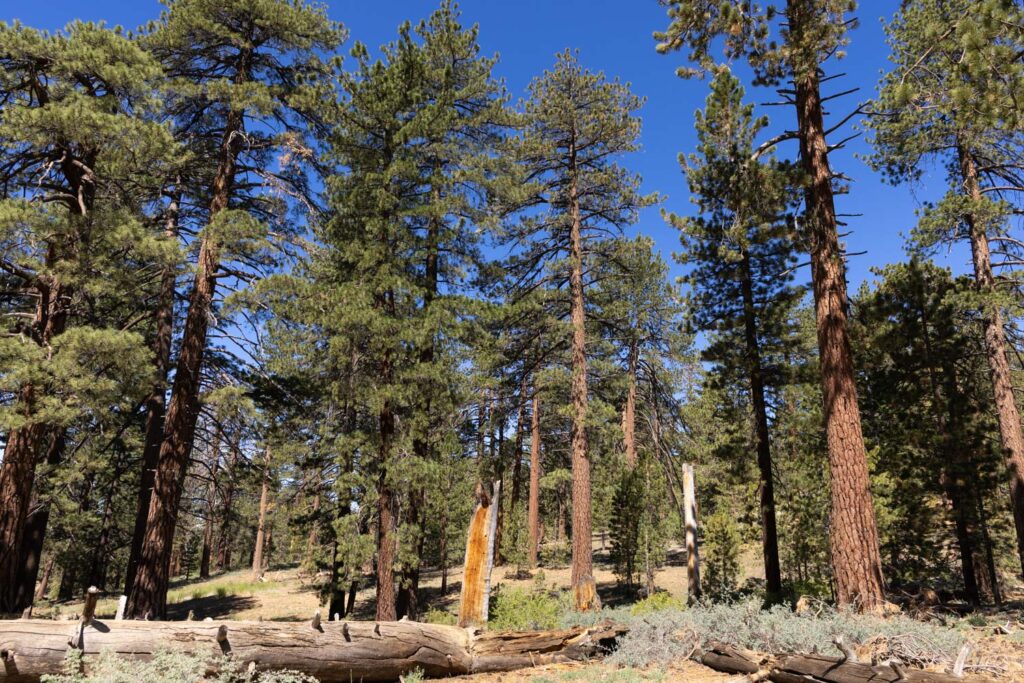
While the Forest Service’s report on MOG forests on national forest lands contains useful information, the actual data have not been made available to the public. Instead, we have been directed to a vague interactive map to see where MOG forests are, but the extremely coarse scale of the map render it somewhat useless for taking a close look at particular areas within a single national forest like the Los Padres. In fact, the report and the map make it unclear whether the Forest Service identified any lands within the Los Padres National Forest as old-growth.
Only the general areas around Mt. Pinos and Big Pine Mountain are indicated to have some mature forest and low amounts of old-growth. This is surprising considering the lack of historical logging across most of the Los Padres National Forest, the presence of obvious old-growth forest in places like the Sespe Wilderness and Chumash Wilderness, and the extensive pinyon-juniper landscapes of northern Ventura County that are comprised of relatively large singleleaf pinyon pines (which grow very slowly). Even in the Big Sur region, where there are numerous stands of old coast redwoods, the Forest Service’s map shows only “Low Mature – Low Old-Growth.”
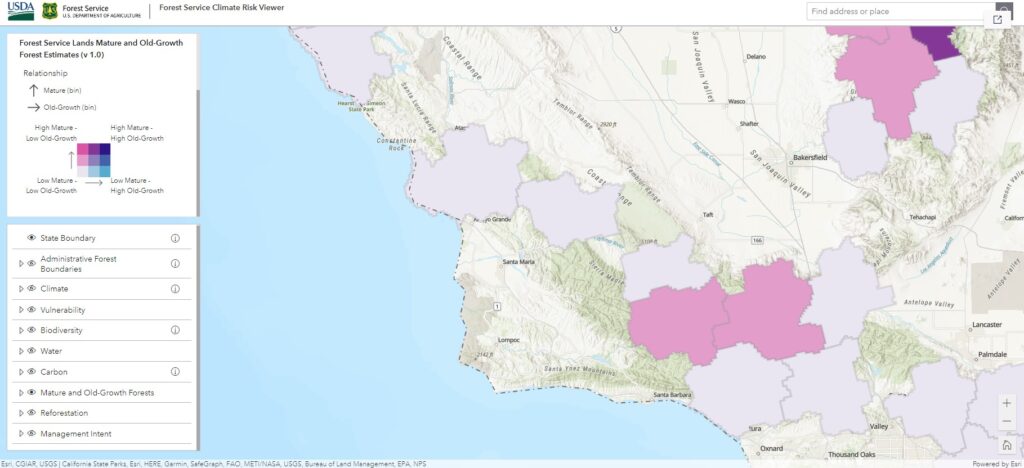
Interestingly, the agency recently claimed that there is no evidence of old-growth forest on Pine Mountain. We have analyzed forest stand exam data, historical records, and aerial imagery from the 1930s and can find no evidence that logging historically occurred on Pine Mountain. The presence of conifers up to five feet in diameter, multilayered canopies, high tree species diversity, a variety of tree ages, and the presence of old snags (i.e. standing dead trees) and downed wood would indicate that there is indeed old-growth forest there, yet the agency apparently disputes this with virtually no evidence to back up their claims that the forests on Pine Mountain are actually quite young.
All of this is to say that the Biden administration’s methods are somewhat opaque and confusing.
Regardless, the federal rulemaking process currently underway presents an important opportunity for scientists, tribal groups, conservation organizations, and the general public to weigh in about how best to protect MOG forests. Yet, the government appears to be avoiding an elephant in the room: its ongoing logging practices. The report released last month does not identify logging as a threat to MOG forests, instead focusing on fire, insects, and drought as primary concerns. Based on many indications over the past few years as well as continued approval of projects that allow cutting of large trees, there’s reason to believe that the Forest Service will attempt to bake logging under the guise of wildfire mitigation and “forest health” into future MOG forest management policies.
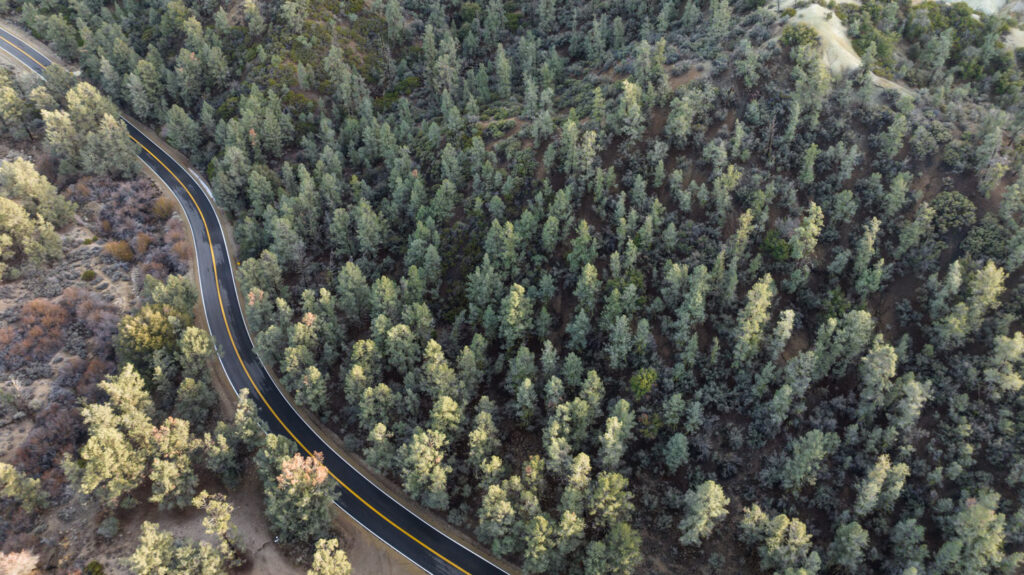
A 2023 study by a team of independent scientists from the Woodwell Climate Research Center, Wild Heritage, and the Natural Resources Defense Council found that 16 inches represents the average diameter threshold that separates smaller trees from larger trees in the conifer forests of the Sierra Nevada. These forests are slightly wetter than those of the Los Padres National Forest and therefore have higher growth rates, so a 16-inch diameter tree in the Sierra Nevada may be even younger than a tree of the same size in the Los Padres. Yet, the Forest Service has proposed and approved multiple projects that allow trees up to two feet in diameter or more to be cut, stating that anything smaller than 24 inches in diameter is a small tree.
We’re joining a chorus of organizations in asking the Biden administration to establish meaningful protections for federal MOG forests, especially as it relates to logging. Big trees, both live and dead, play an outsized role in carbon storage in our forests. If the current administration is uplifting natural climate solutions, then protecting large trees from harvest will be important over the coming years and decades.
Stay tuned for more information about this issue and how you can get involved.
Kern County/U.S. Forest Service Project Causes Extensive Soil and Tree Damage
Los Padres Forest Watch News, Feb 9, 2023 www.lpfw.org
Nearly four years ago, the U.S. Forest Service approved a massive, 12-mile long fuel break along Tecuya Ridge—located in the San Emigdio Mountains of southern Kern County—in the name of “forest health” and fire mitigation. While the Forest Service approved its project on federal land atop the ridge, the Kern County Fire Department approved a similar project on a cluster of adjacent private parcels. The County used much of the same language as the Forest Service when justifying their project on Tecuya Ridge, stating that the project would “improve forest resilience.”
Work has yet to start on federal land, but County Fire’s contractors have been quick to send heavy equipment up the ridge to start cutting trees and grinding shrubs. We recently visited some of the area (with permission from a landowner) where work was conducted over the last month. What we saw was a far cry from a healthy forest.

Everywhere we walked, the soil was damaged extensively. Heavy equipment such as masticators had created ruts, some of which were two feet deep, and left huge swaths of the ground completely bare. Such severe rutting could only have been caused by use of heavy machinery when the soil was wet, which is prohibited by County Fire’s own project design features and requirements. These degraded soil conditions can lead to erosion issues for landowners, and non-native, highly flammable grasses such as cheatgrass will likely take hold in the area as these plants thrive in such disturbed environments.
We also documented considerable damage to the trees that were left uncut. Mature pinyon pines had large gashes where machinery had hit them while cutting nearby vegetation. The trunks of some trees looked as though something had taken a large bite out of them. Once again, this type of careless damage to “leave trees” is prohibited according to project documents. County Fire’s own documents state that the project will supposedly reduce native bark beetle activity, but numerous studies have shown that beetle activity can actually increase substantially after tree-cutting projects due to this exact type of damage to the trees left behind. Tree wounds ooze sap, releasing volatile chemicals that attract bark beetles to the area. Sadly, because of this careless work, we can expect to see a portion of the remaining trees die over the coming months and years.

This scene may foreshadow what’s to come along the rest of Tecuya Ridge as well as across fuel breaks proposed as part of the “Ecological Restoration Project” (ERP) in the Los Padres National Forest. However, Kern County Fire’s project actually has more environmental safeguards than what the Forest Service approved on Tecuya Ridge—and it has more restrictions than the ERP based on the information released by the Forest Service so far.
For example, the County’s project is non-commercial and does not allow for live trees over 10 inches in diameter to be cut. The Forest Service’s approved project on Tecuya Ridge, on the other hand, has no diameter limit except in inventoried roadless areas where they say trees over 21 inches in diameter won’t be cut. Similarly, the widely opposed Pine Mountain logging project approved in 2021 allows for trees up to 24 inches in diameter to be removed. And across the 186,000 acres of fuel breaks in the ERP proposal, there is no diameter limit. Even in 49,000 acres of land designated as “forest health treatment units” in the ERP only have the same 24-inch diameter limit as in the Pine Mountain project.
In other words, we can expect the rest of Tecuya Ridge, Pine Mountain, and many other such areas in the Los Padres National Forest to look like this and likely even worse if these projects are implemented in their current forms. (Photos by Bryant Baker)
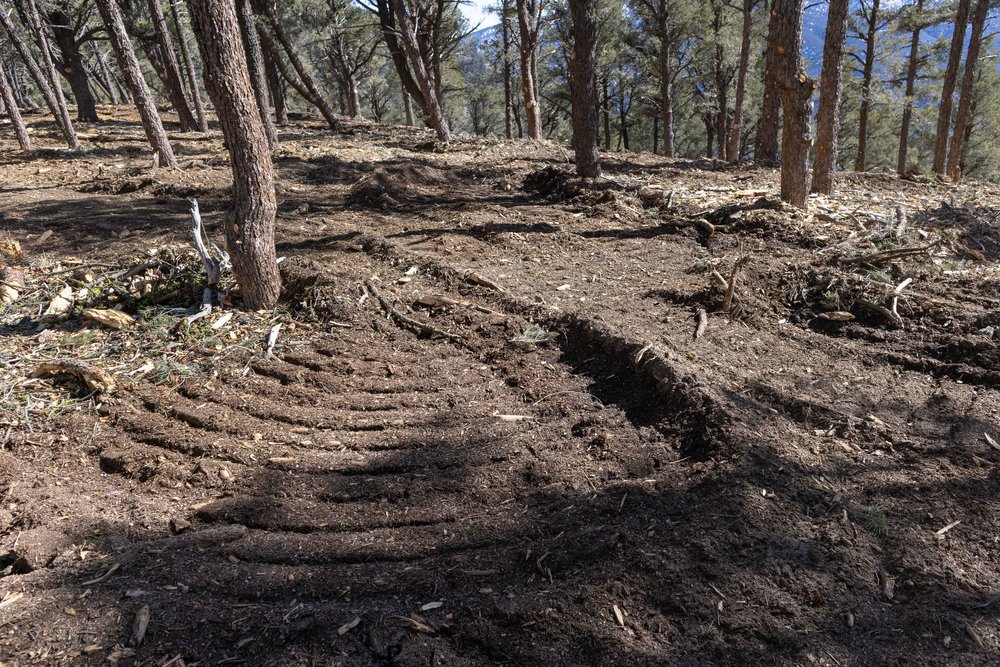
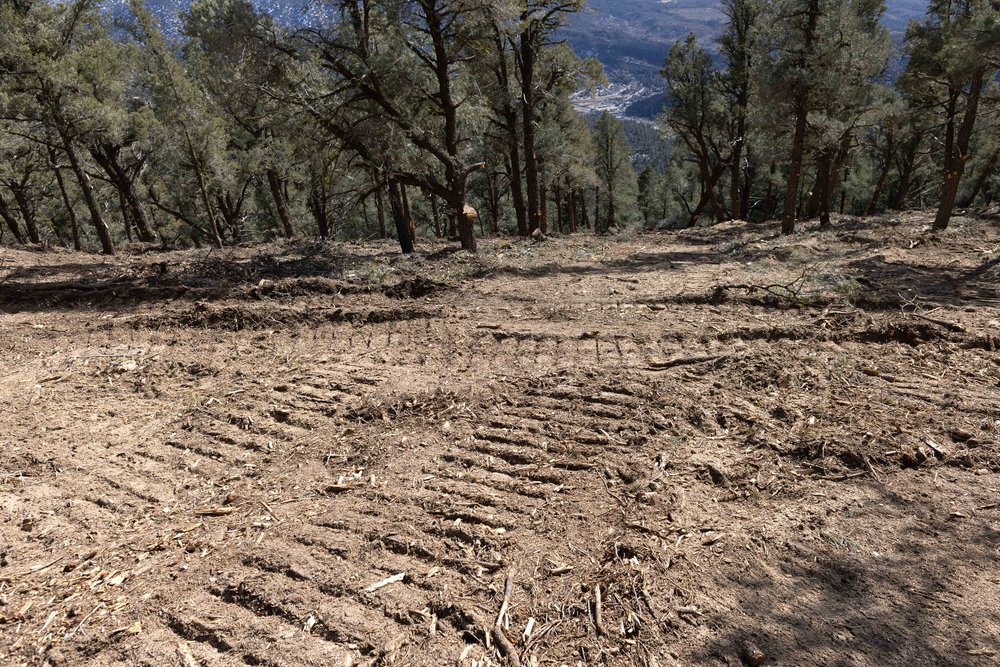
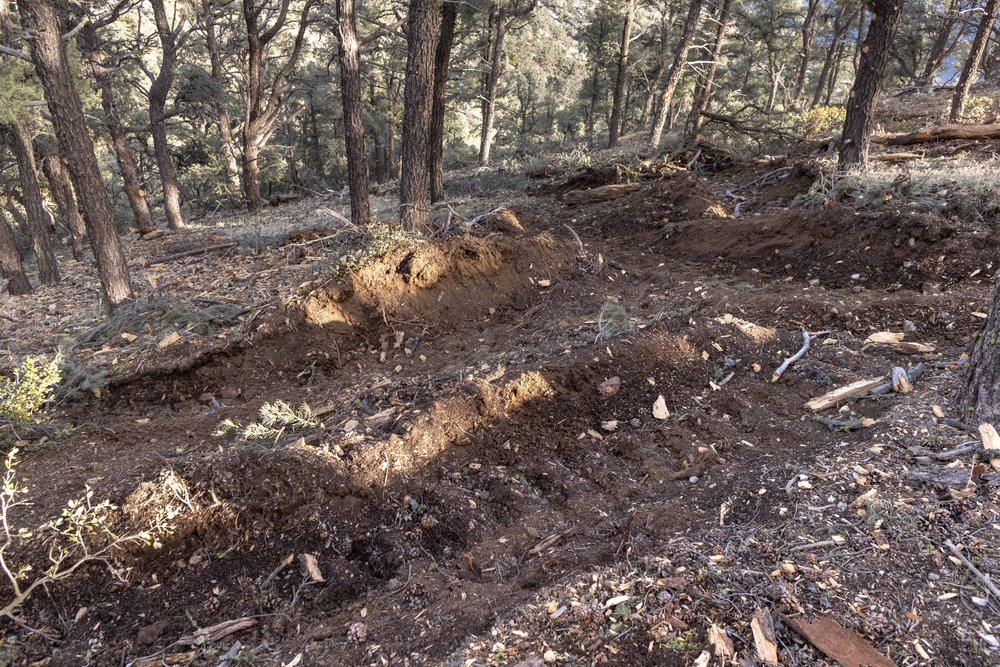
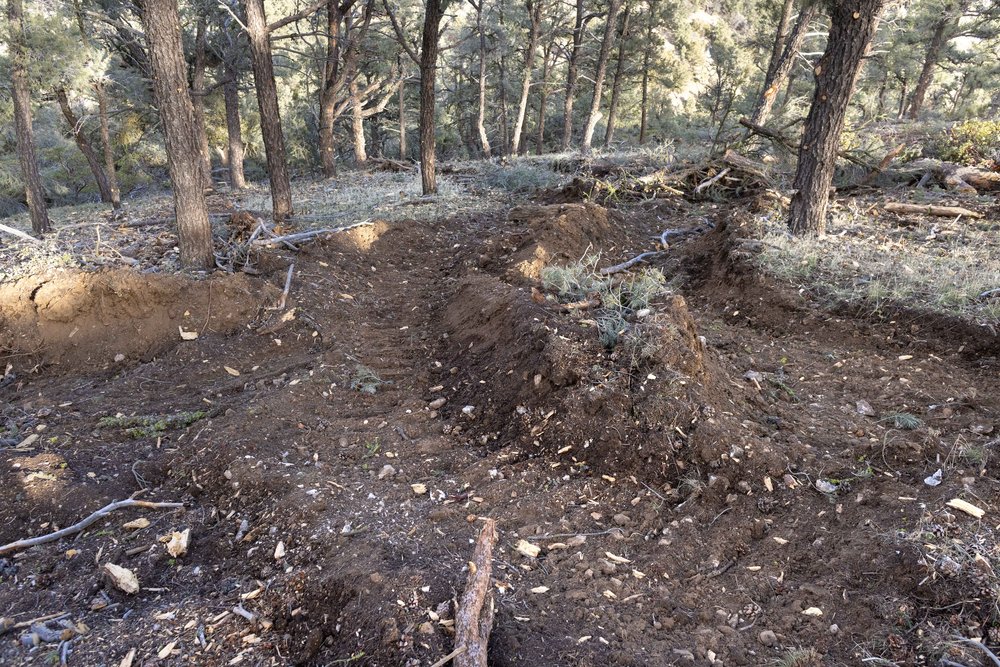
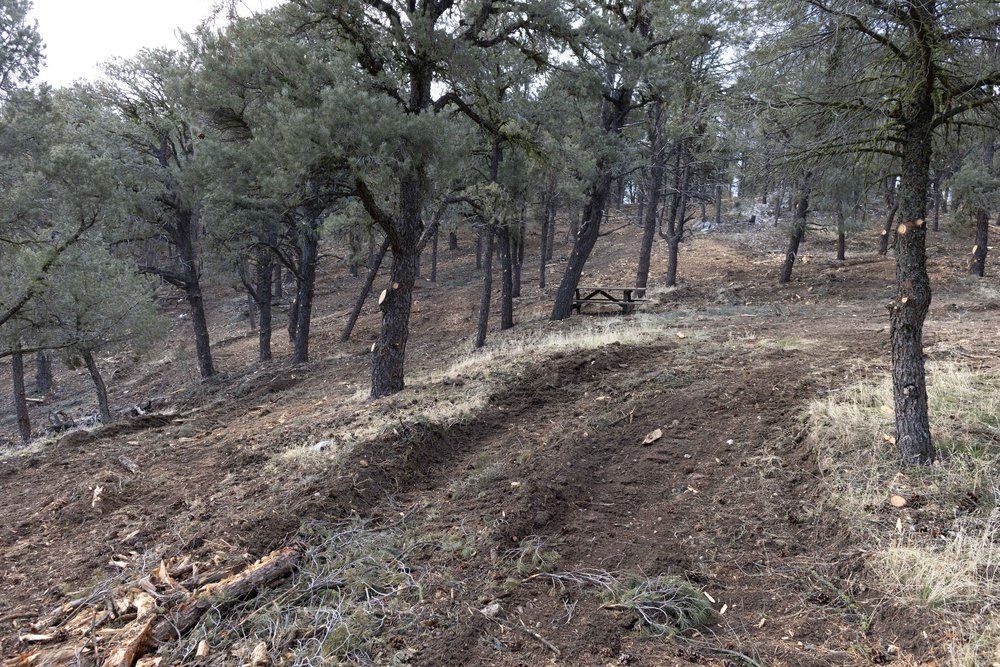
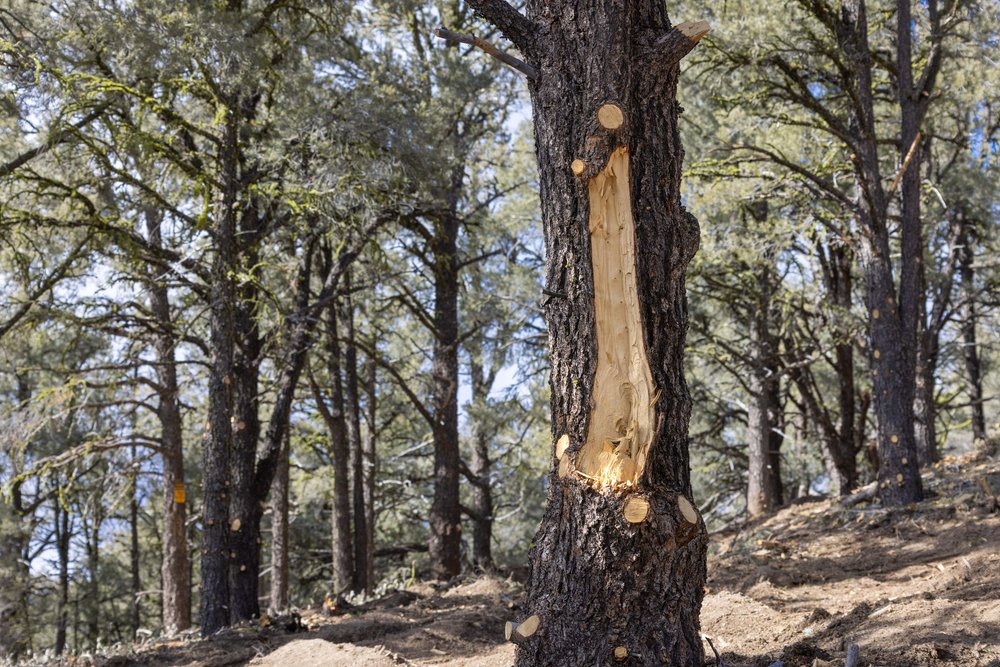
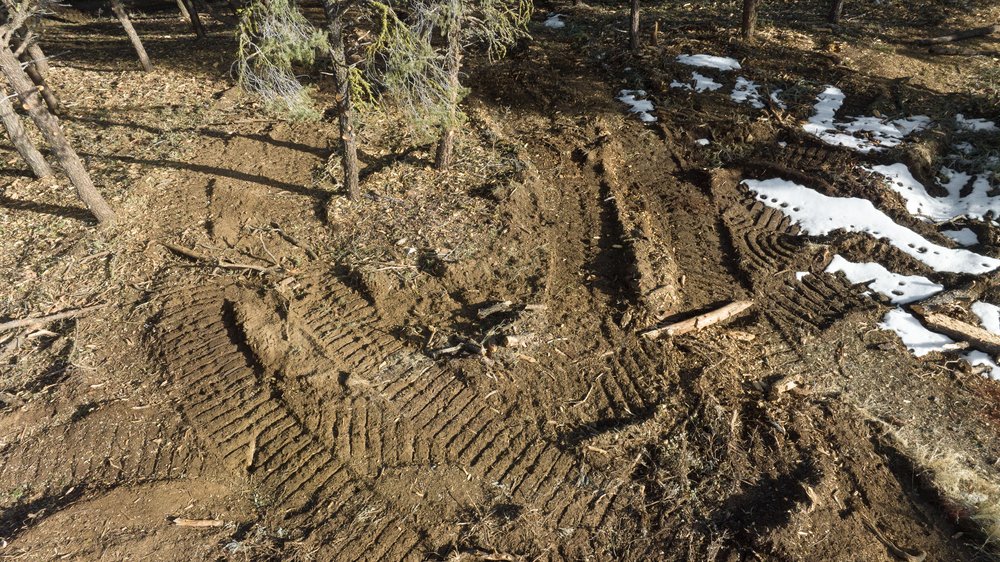
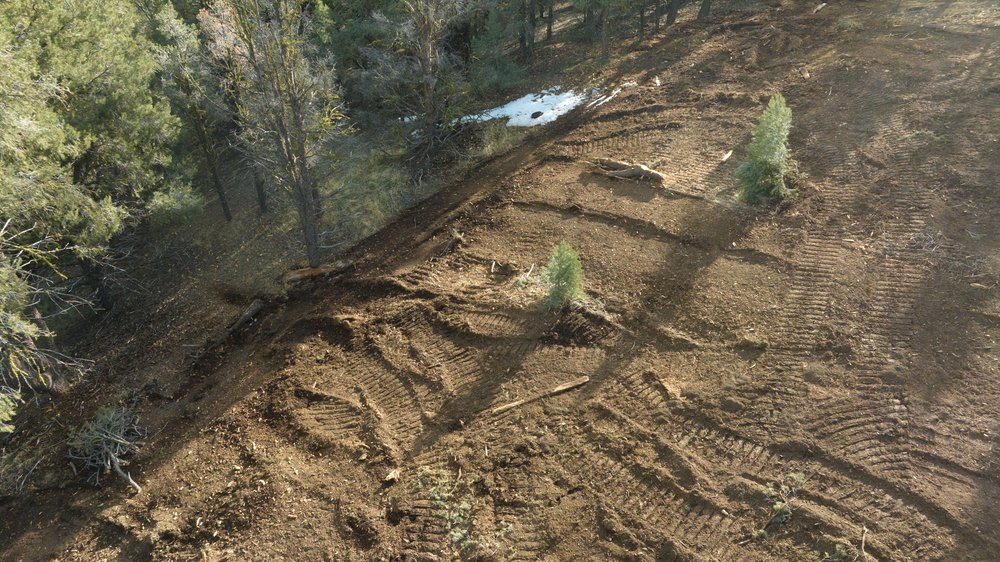
Lawsuit Seeks Public Records Related to Controversial Project in Los Padres National Forest
by ForestWatch on DECEMBER 15, 2022 in FOREST SERVICE, LOGGING & VEGETATION CLEARING, PUBLIC LANDS

Washington, D.C. – ForestWatch filed suit this week seeking to compel the U.S. Forest Service to release public documents. The documents, kept secret for months, relate to a controversial plan to log trees and remove vegetation across extensive areas of Los Padres National Forest in Santa Barbara, Ventura, San Luis Obispo, Monterey, and Kern counties.
The suit also asks the court to refer the matter to the U.S. Office of Special Counsel—an independent federal investigative and prosecutorial agency—to examine systemic abuses in how Los Padres officials respond to requests from the public, citing “arbitrary and capricious conduct of Forest Service personnel.”
Los Padres ForestWatch, an environmental nonprofit organization based in Santa Barbara, California, filed the legal action in U.S. District Court for the District of Columbia following a series of requests the group filed under the Freedom of Information Act (FOIA) this summer. Those requests asked the Forest Service to disclose several documents pertaining to a controversial plan called the Ecological Restoration Project.
The project is the largest mechanical alteration of land in the history of Los Padres National Forest, and one of the largest projects proposed for any national forest in the country. Heavy industrial equipment would be used to clear vegetation and extensively log trees across 235,000 acres of national forest land in five counties.
The Forest Service has hired out-of-state consultants to prepare a minimal study of the plan’s impacts to endangered species, trails and camps, and more than one thousand cultural sites important to local Tribes. The brief study is funded by Pacific Gas & Electric, an investor-owned utility responsible for several of California’s largest and deadliest wildfires. More than three thousand people and eighty community organizations voiced concerns over the project during the plan’s initial public comment period.
At the beginning of the comment period, ForestWatch submitted a formal FOIA request to the Forest Service to help the organization and its experts better understand the project and formulate technical comments and recommendations for the agency to consider. The ForestWatch request sought a copy of the contract between the Forest Service and DJ&A (the out-of-state consultant), records relating to PG&E’s funding of the study, and other records related to the project.
ForestWatch also sought expedited processing of the request because the documents were critical to help ForestWatch and other members of the public better understand the proposal and submit comments during a short 30-day comment window. Expedited processing shortens the time frame from 20 days to 10 days for an agency to respond to a FOIA request.
Andrew Madsen—the Public Information Officer for Los Padres National Forest—initially granted ForestWatch’s request for expedited processing, but then missed the shortened deadline to release the requested records. Only after ForestWatch posted to social media about the Forest Service’s delay did Mr. Madsen provide ForestWatch with 18 records, stating that no other records existed. Two weeks later (and seven weeks after initially filing its request), ForestWatch learned that the Forest Service possessed many more records about the project, but instead of making them available to ForestWatch and the public, Mr. Madsen transferred the request to the Forest Service’s headquarters in Washington, D.C. where an immense backlog of FOIA requests meant the documents would languish for months, if not years.
On September 29, 2022, two days after the end of the public comment period, ForestWatch submitted a second request for the records, and again asked for expedited processing. Nearly one month later, the Forest Service responded that they needed an additional ten days to respond. After those ten days plus another four, the agency provided ForestWatch with several dozen additional documents but again notified ForestWatch that many additional documents were kept hidden and sent to Washington, D.C. headquarters for further review.
The FOIA is one of the hallmarks of federal government oversight and accountability. The fundamental purpose of the law is to ensure governmental transparency by establishing the public’s right to access federal agency records. The law imposes strict deadlines for releasing records in response to FOIA requests. Upon receipt of a request, the FOIA requires agencies to issue a determination within 20 workdays, and to make requested records “promptly available.” The law also requires agencies to provide an estimated date of completion and to conduct a search reasonably calculated to uncover all relevant documents.
According to the ForestWatch lawsuit, the Forest Service initially approved ForestWatch’s request for expedited processing but then did not provide the group with an estimated date of completion, did not conduct an adequate search for records, and indefinitely delayed the processing of ForestWatch’s request by transferring it to the agency’s Washington, D.C. headquarters.
In requesting referral of this matter to the government’s Office of Special Counsel, the lawsuit cites the Forest Service’s “arbitrary or capricious policy, pattern and/or practice of denying the organization’s legal right to promptly receive records to which it is entitled under FOIA.” The agency regularly misses deadlines, delays production of public records, unlawfully keeps certain public records hidden from the public, and transfers FOIA requests to other offices in an apparent attempt to evade release of public records. The records pertain to a wide variety of issues in Los Padres National Forest that have high levels of public interest. To address issues like this, the FOIA includes a provision authorizing a judge to refer the matter to the Office of Special Counsel, which has special power to investigate and make binding recommendations for corrective actions and disciplinary action to ensure agencies properly comply with the FOIA.
The Forest Service has thirty days to respond to the lawsuit.
ForestWatch is represented by Maya Kane of Southwest Water and Property Law LLC and Travis Stills of Energy & Conservation Law.
IMPORTANT LEGAL VICTORY TO PROTECT LOCAL WATERSHED LANDS (Aug.14, 2022)
| LPFW has secured a legal agreement that protects more than one million acres of public lands in central California from oil drilling and fracking.The agreement—signed by ForestWatch and several partners, the State of California, and the U.S. Bureau of Land Management—suspends all new federal oil and gas leasing in Santa Barbara, Ventura, San Luis Obispo, and Kern counties and beyond, safeguarding some of our region’s most cherished open spaces and our communities. Since 2005, our small but mighty organization has spearheaded local efforts to make the Bureau more accountable to communities and the environment and less beholden to the fossil fuel industry. We were first to uncover the sheer outrageousness of the Bureau’s drilling and fracking plan, obtaining the Bureau’s mapping data, highlighting the places at stake, and generating thousands of public comments. This plan would have allowed fossil fuel development to occur on or next to schools, neighborhoods, reservoirs, places of high value to Native American tribes, state beaches and parks, county open spaces, trails, and our national parks, forests, and monuments. There were no limits to where the Bureau would allow the fossil fuel industry to drill and frack so we took them to court and just days ago, the ink dried on an agreement that protects these special landmarks. This landmark agreement was approved on Monday by a federal judge. Places like Boney Mountain in the Santa Monica Mountains, the Ilvento Preserve in Ojai, the Cuyama Valley, Los Osos Middle School, Montana del Oro State Park, Lake Nacimiento, the Carrizo Plains Ecological Reserve are now protected. For more visit http://www.lpfw.org |
| The Los Padres Forest Watch Launches Activist Website |
(Sept. 22, 2022, Santa Barbara, Ca.) – The LPFW has launched a new website for taking direct action to protest logging industry permits in the Los Padres Forest. Please save the link and by all means SIGN THE PETITION and give them your email address for updates!
https://p2a.co/tnbeFGQ
TELL THE BIDEN ADMIN TO BAN LOGGING IN MATURE FORESTS
According to the report by the International Panel on Climate Change this April, preserving our forests and natural ecosystems is critical to averting catastrophic climate change and protecting biodiversity. Urge the Administration to protect our national forests as a cornerstone of its climate policy,
TELL THE EPA TO DEFEND CALIFORNIA’S DRINKING WATER
An oil company is using the Sespe Aquifer in Los Padres National Forest, just a half mile from the City of Fillmore’s only source of water, as a toxic waste dump in violation of the Safe Drinking Water Act. Tell the EPA to reject the oil company’s request for exemption from the law.
TELL THE FOREST SERVICE NOT TO LOG ON MT. PINOS
Tell the Forest Service to abandon plans to expedite yet ANOTHER likely commercial logging project across miles of forests that are important to the Chumash, environmentally rare and sensitive, and adored for big healthy trees.
PROTECT THE BITTER CREEK NATIONAL WILDLIFE REFUGE
At the request of a single politically-connected private landowner, the Trump administration set a plan in motion to reduce the potential size of Bitter Creek National Wildlife Refuge by 26%, setting a terrible precedent for the entire wildlife refuge system. Take action now to stop it.
PROTECT OUR LAST WILD LANDS AND RIVERS – SUPPORT THE WILDERNESS BILL
Help secure the highest environmental protections for lands and rivers and improve access in Los Padres National Forest, Carrizo Plain National Monument, and across the nation.
ASK CONGRESS TO PROTECT PINE MOUNTAIN, MT. PINOS, & OTHER FORESTS
Ask your representative to protect Pine Mountain and to close loopholes that allow large commercial logging and biomass harvest projects in sensitive areas without critical environmental studies required under NEPA.
Receive updates on actions you can take to protect public lands along California’s central coast.
TELL THE FOREST SERVICE TO PROTECT PINE MT. AND MT. PINOS
The Forest Service is planning thousands of acres of commercial logging on Pine Mountain and Mt Pinos under loopholes to skip environmental studies normally required under the National Environmental Policy Act. These mountain tops are culturally and spiritually important to Native Americans, treasured for their beauty and for outdoor recreation, and home to rare old growth conifer forests and chaparral, and threatened and endangered wildlife and plants.